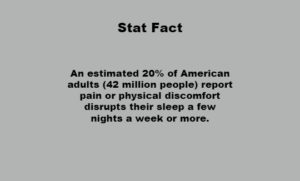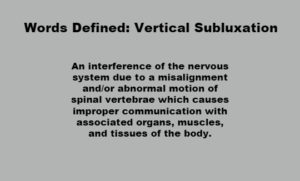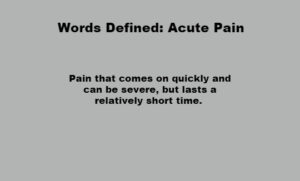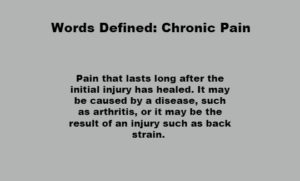Pain and Chiropractic: How You Can Benefit
Many Americans suffer from chronic pain. In fact, according to the National Centers for Health Statistics, more than one quarter of Americans (26%) age 20 years and over – an estimated 76.5 million Americans – report that they have had a problem with pain. They wake up in the morning in pain and go to bed that way. And for many, sleep is interrupted because of it. Such pain limits activities and limits life enjoyment. But what can a person do?
The old view solution was to take medication. Of course, as time went on, more and more medication would be needed. And that was if you were lucky enough to be helped by the medication in the first place.
If the pain persisted, surgery was often the next avenue of care. The problem with surgery is that the “cure” often leaves chronic sufferers in more pain. Perhaps a different pain, but pain nonetheless.
The old medical model is a model of disease. The first line of defense is to mask the symptoms. The second line of defense is to surgically repair. This is very different from the wellness model practiced by chiropractors.
Chiropractors do not seek to mask symptoms. Instead, we seek to help the body function at its most optimal level by fixing subluxations in the spine. We seek the cause of the problem.
My philosophy is that the body is a self-healing, self-regulating organism and we should be fully functioning, but through various traumas – large or small – we accumulate over the years, the body gets out of alignment. That’s when the body will manifest itself with pain.
Are There Different Types of Pain?
In order to understand how chiropractic can help, it will be helpful to define pain.
Pain is not a bad thing in and of itself. Of course for those experiencing it, it is no fun. However, it is the body’s way of sending an SOS to the body. The message is that something is wrong and the SOS is loud enough that it can’t be ignored.
If a person feels a sufficient amount of pain, they will stop doing the activity that causes it. This is the protective mechanism built into the body to help prevent further injury.
Pain is useful as long as it is keeping us healthy. However, it can get out of control. It can continue long after its usefulness has been achieved.
Pain that stops you from injuring yourself further is called acute pain. It is the body’s response to injury. For instance, if you twist your ankle while hiking along a trail, what you feel is acute pain. Chronic pain is that which persists far beyond the twisted ankle.
When a patient visits our office with acute pain, we go through a thorough consultation and exam. We do computerized scans, computerized range of motion, surface electromyography (EMG), and thermal scans. Then we take digital x-rays. One part of the technique we use is upper cervical chiropractic, so we take very specific x-rays and full body x-rays as needed. Then we do a complete orthopedic exam.
The patient is asked to return the next day and we review the scans and x-rays and show them where the area of pressure is located. Then we most often begin adjustments.
Other methods of treatment that we use for acute injuries include:
- Thompson Drop Table (Drop Table Adjusting) – Has drop pieces, or different segments of the table, so when you apply enough pressure, the table drops away from the patient; a gentle adjustment
- Resting Beds – Patients stay on for at least 30 minutes after treatment, allowing the adjustment to hold
- Vibracusser – Loosens muscles and ligaments to get rid of trigger points; often used before the Drop Table adjustment
- Arthrostim – Used to get ligaments and muscles to relax
- Intersegmental Traction
- Wobble Chair
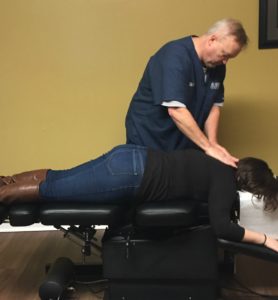
Chronic pain has many sources:
- Injuries that did not heal correctly or completely
- Long-term disease
- Injuries to the nervous system
Of course, chronic pain has many sources, but no matter what, the source of chronic pain is one that encompasses an unresolved issue with the body.
The biggest problem with chronic pain is that it starts a vicious cycle that leads to more pain. The longer we hurt, the more our body tries to accommodate it. This is often through unusual body movements and posture, and through a reduction of activities. The more the body accommodates it, the more difficult it is to get rid of it. It can be a very difficult cycle to break.
This is where chiropractic care comes in. Chiropractic treatment can help reduce or even eliminate many kinds of pain and has been shown to be especially effective with chronic pain. Our job is to remove the interference and restore the function of the body so that it’s able to heal on its own. In other words, chiropractic’s role is to establish the normal function of muscles, joints, and the nervous system, thus eliminating the root causes of chronic pain.
